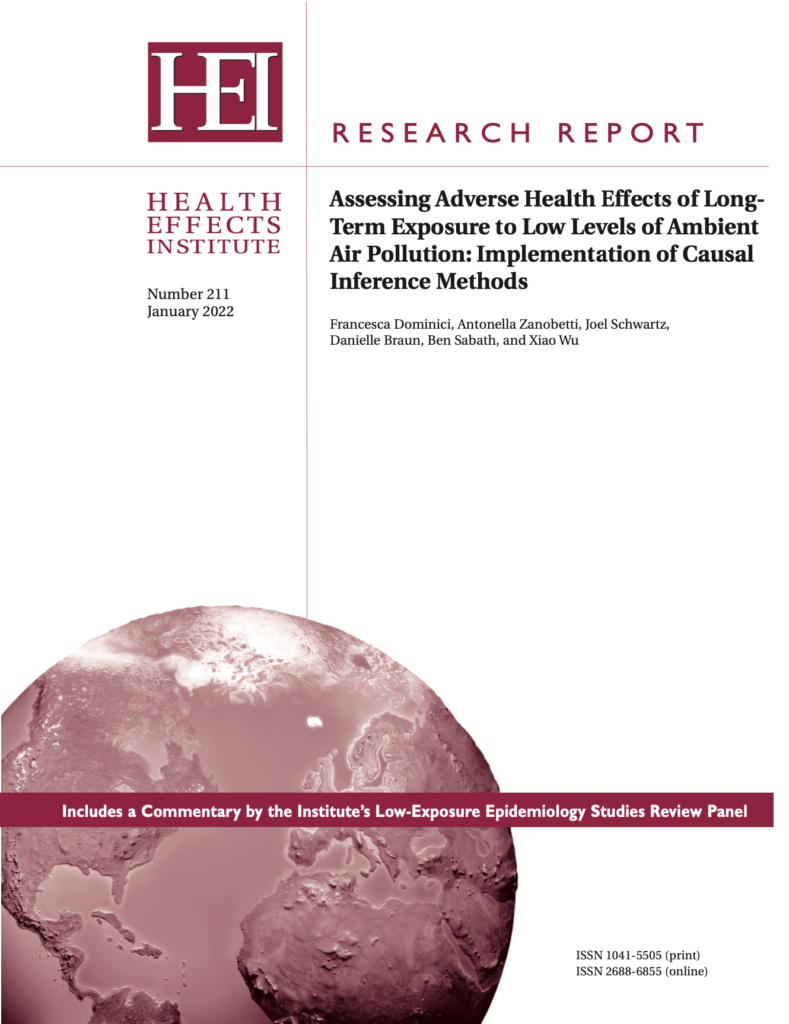New U.S. Study Reports Health Effects at Air Pollution Levels Below Current Standards
Researchers found risk of mortality at lowest levels of air pollution.
A comprehensive new study examining potential health risks from low levels of air pollution exposure in 68.5 million older Americans was published today by the Health Effects Institute (HEI), reporting increased risks of mortality, including at the lowest levels of exposure to fine particulate matter (PM2.5), even below current U.S. National Ambient Air Quality Standards (NAAQS). The results come in as the U.S. Environmental Protection Agency begins conducting an accelerated review of the current level of the NAAQS for particulate matter. Proposals for tightening of the standards are expected later in spring 2022.
In the four-year long study, Assessing Adverse Health Effects of Long-Term Exposure to Low Levels of Ambient Pollution: Implementation of Causal Inference Methods, Francesca Dominici, Professor of Biostatistics, Population Health, and Data Science at Harvard University’s T.H. Chan School of Public Health, and her colleagues developed annual exposure models for PM2.5, ozone (O3), and nitrogen dioxide (NO2) at a spatial resolution of 1 km x 1 km for the years 2000 to 2016 to estimate exposure for all 68.5 million Americans in the study, all of whom were Medicare recipients.
The research team conducted analyses of the exposure-health connection and presented results from three newly developed causal inference approaches and two traditional regression approaches for estimating the risk of dying associated with long-term exposures to the pollutants. Findings were consistent across all five analyses. The team reported a 6% to 8% increased risk of mortality per 10 micrograms per cubic meter (μg/m3) increase in PM2.5 exposure across the different analyses, with stronger associations at exposure levels below the current annual national standard of 12 μg/m3.
“This study is the result of a multi-year effort by an incredibly talented team of graduate students and post docs,” Dominici said, adding, “Importantly, results of this study will be able to inform the EPA as to whether or not they should lower the National Ambient Air Quality Standards for PM2.5 in the United States.”
The report was subjected to comprehensive independent peer review by the HEI Low-Exposure Epidemiology Studies Review Panel, who had no role in conducting or overseeing the study. They concluded that this report presents a high-quality and thorough investigation into associations between risk of mortality and exposures to ambient air pollution in the United States, applying advanced statistical techniques to test rigorously whether the air pollution exposure actually caused direct impacts on health.
“Dominici and colleagues report analyses of the highest rigor that contribute important knowledge about health effects associated with long-term exposures to very low concentrations of ambient air pollution,” said Dan Greenbaum, HEI President.
Air pollution has long been viewed as a significant contributor to the global burden of disease, including to risks of heart disease, diabetes, asthma, and respiratory disease. According to HEI’s recent Global Burden of Disease – Major Air Pollution Sources report, a major source of PM2.5 comes from the burning of fossil fuels, accounting for more than 1 million deaths globally. Although air pollution concentrations have been declining over the past few decades in many higher-income countries, several studies published in the past decade have reported greater associations between risk of mortality and long-term exposures to relatively low concentrations to PM2.5.
The report is the second in a set of three studies funded by HEI to explore health effects from air pollution exposure at levels below government recommended standards. The other two reports were conducted in Europe, released in September 2021, and in Canada, with final results expected later this year. All three studies were funded through HEI’s program to investigate the health effects of long-term exposures to low levels of air pollution in very large populations across the United States, Canada, and Europe.
A synopsis of the study can be found here.

